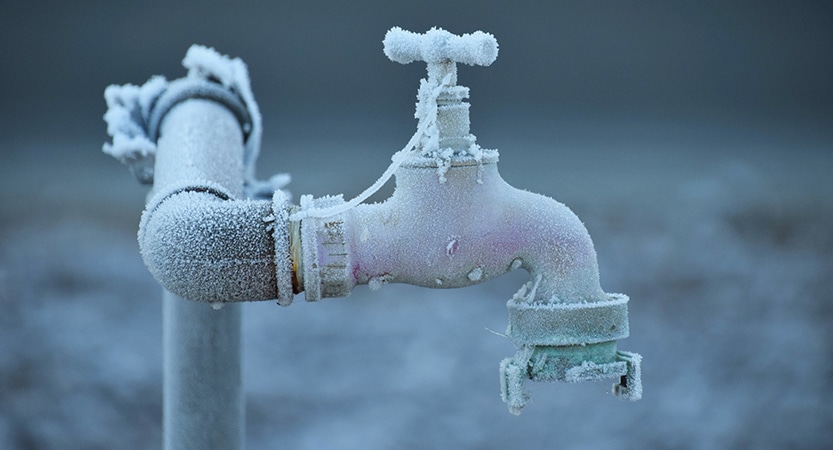Tips to Safeguard Pipes from Freezing: Specialist Guidance
Tips to Safeguard Pipes from Freezing: Specialist Guidance
Blog Article
They are making a few great pointers about Preventing and dealing with frozen pipes in general in this great article following next.

Cold weather can ruin your pipes, particularly by freezing pipes. Right here's exactly how to stop it from taking place and what to do if it does.
Intro
As temperature levels decline, the threat of frozen pipes increases, potentially resulting in costly repair work and water damage. Comprehending just how to prevent icy pipelines is crucial for property owners in chilly climates.
Recognizing Icy Pipelines
What triggers pipes to ice up?
Pipelines ice up when revealed to temperatures below 32 ° F (0 ° C) for extended periods. As water inside the pipelines ices up, it broadens, taxing the pipeline wall surfaces and possibly creating them to break.
Risks and problems
Icy pipelines can cause water system interruptions, property damages, and costly fixings. Ruptured pipelines can flood homes and trigger substantial structural damages.
Indications of Frozen Pipes
Identifying frozen pipes early can prevent them from rupturing.
How to determine frozen pipelines
Search for decreased water circulation from taps, uncommon smells or noises from pipes, and visible frost on revealed pipelines.
Avoidance Tips
Protecting susceptible pipes
Wrap pipes in insulation sleeves or use warm tape to shield them from freezing temperature levels. Concentrate on pipelines in unheated or exterior locations of the home.
Heating strategies
Keep interior rooms adequately warmed, particularly areas with pipes. Open cabinet doors to permit warm air to flow around pipes under sinks.
Shielding Outside Pipes
Garden hoses and exterior faucets
Detach and drain pipes garden pipes before winter. Set up frost-proof faucets or cover outdoor faucets with shielded caps.
What to Do If Your Pipelines Freeze
Immediate activities to take
If you believe frozen pipelines, keep faucets open up to ease stress as the ice thaws. Utilize a hairdryer or towels soaked in warm water to thaw pipes gradually.
Long-Term Solutions
Architectural modifications
Think about rerouting pipelines away from exterior walls or unheated areas. Include added insulation to attic rooms, cellars, and crawl spaces.
Updating insulation
Buy top quality insulation for pipes, attics, and walls. Proper insulation aids keep consistent temperatures and reduces the danger of frozen pipelines.
Conclusion
Protecting against frozen pipelines requires aggressive steps and fast responses. By comprehending the reasons, signs, and safety nets, home owners can safeguard their pipes throughout winter.
6 Proven Ways to Prevent Frozen Pipes and Protect Your Home
Disconnect and Drain Garden Hoses
Before winter arrives, start by disconnecting your garden hoses and draining any remaining water. Close the shut-off valves that supply outdoor hose bibs and leave the outdoor faucet open to allow any residual water to drain. For extra protection, consider using faucet covers throughout the colder months. It’s also important to drain water from any sprinkler supply lines following the manufacturer’s directions.
Insulate Exposed Pipes
Insulating your pipes is an effective way to prevent freezing. Pipe insulation is readily available at home improvement stores and is relatively inexpensive. Pay close attention to pipes in unheated areas such as the attic, basement, crawl spaces, or garage. Apply foam insulation generously to create a buffer against the cold. You can also wrap your pipes in heat tape or thermostat-controlled heat cables for added warmth.
Seal Air Leaks
Inspect your home for any cracks or openings that could let in cold air. Seal any holes around the piping in interior or exterior walls, as well as the sill plates where your home rests on its foundation. Additionally, make sure to keep your garage door closed unless you’re entering or exiting. Leaving it open creates a significant air leak that can lead to frozen pipes.
Allow Warm Air Circulation
During cold snaps, it’s essential to allow warm air to circulate evenly throughout your home. Leave interior doors ajar to promote better airflow. Open kitchen and bathroom cabinets to help distribute heat consistently around the rooms. If you have small children or pets, be sure to remove any household chemicals or potentially harmful cleaners from open cabinets for safety.
Let Faucets Drip
A small trickle of water can make a big difference in preventing ice formation inside your pipes. When temperatures drop significantly, start a drip of water from all faucets served by exposed pipes. This continuous flow helps prevent the water from freezing. Additionally, running a few faucets slightly can relieve pressure inside the pipes, reducing the chances of a rupture if the water inside does freeze.
https://choateshvac.com/6-proven-ways-to-prevent-frozen-pipes-and-protect-your-home/
:strip_icc()/snow-outdoor-faucet-pipes-4af65d1e5e904fb1aa7bf74071fe5d89.jpg)
As a passionate reader on How To Avoid Freezing Pipes, I was thinking sharing that excerpt was a good thing. For those who appreciated our post plz make sure you remember to share it. Thanks a lot for your time. Come back soon.
Visit My Website Report this page